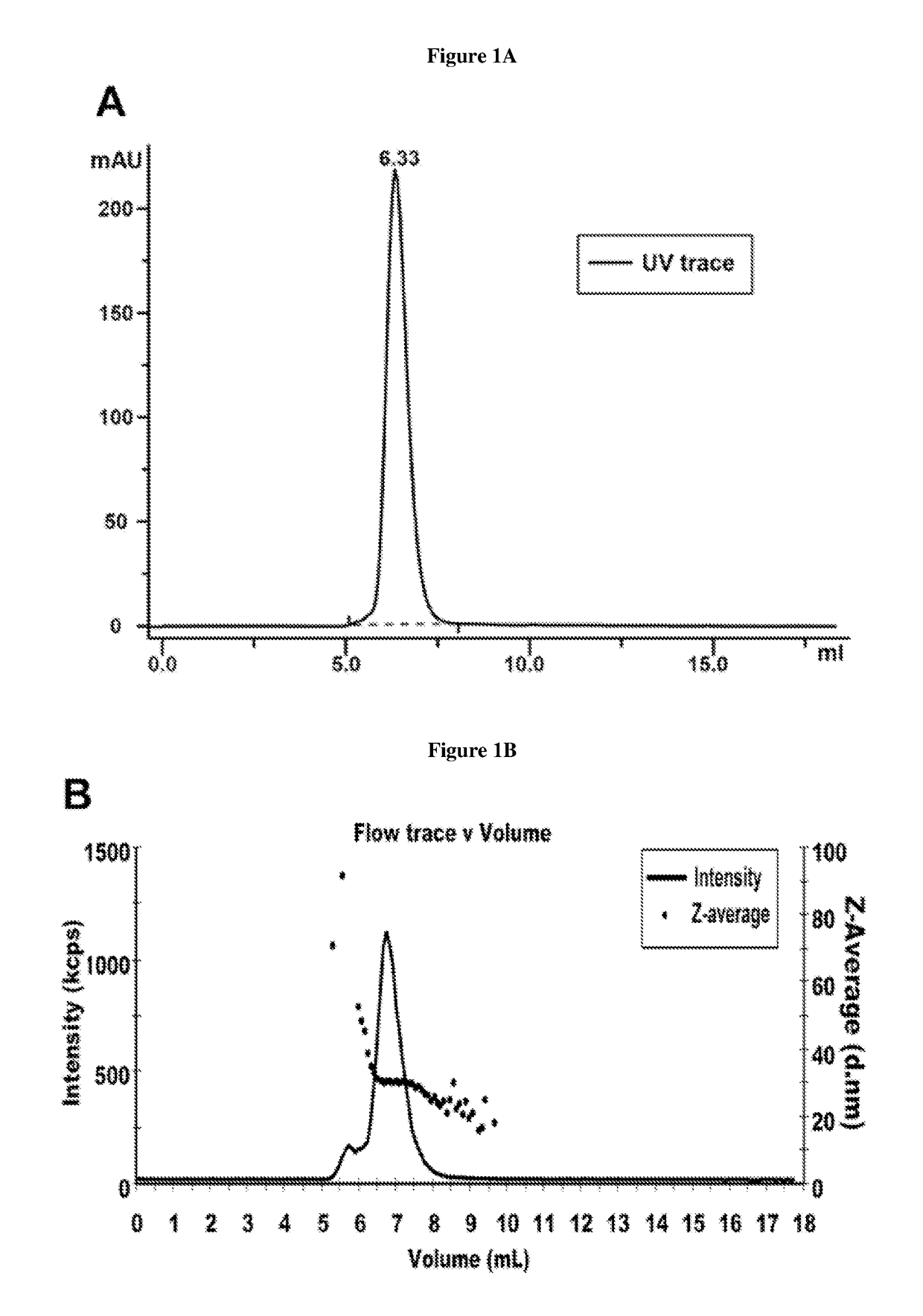High throughput quantification and characterization of viruses and products thereof
a technology of viral particles and products, applied in the field of quantification and characterization of viruses, viral particles, viruslike particles, etc., can solve the problems of calf depression, dehydration and secondary infections, and calf dullness, and achieve high throughput and accuracy
- Summary
- Abstract
- Description
- Claims
- Application Information
AI Technical Summary
Benefits of technology
Problems solved by technology
Method used
Image
Examples
example 1
Preparation of Reference Samples of FMDV
[0121]This example illustrates the procedure for preparing reference samples of FMDV for generating predetermined volume (or time) of elution and predetermined size distribution of FMDV particles.
[0122]Solutions used:
[0123]Dialysis membranes conditioning buffer:[0124]Volume: 1 L[0125]Composition: 10 mM NaHCO3; 1 mM EDTA.
[0126]Dialysis buffer:[0127]Volume: 5 L[0128]Composition: 100 mM NaCl; 50 mM Tris Base; pH=8
[0129]Tris Buffer:[0130]Volume: 5 L[0131]Composition: 200 mM NaCl ; 20 mM Tris Base; pH=8
[0132]Viral suspension:[0133]Volume: 200 mL[0134]Composition: FMDV strain O1 Campos
Procedures:
[0135]Step 1: Dialysis.
[0136]This step was performed to reduce the ionic strength of the suspension of the virus to allow subsequent enzymatic digestion, without increasing the volume of the sample.[0137]1. Boiled the dialysis bags in the dialysis membranes conditioning buffer for at least 30 minutes in a glass beaker. Rinsed 5 times with water and stored at...
example 2
Quantification and Characterization of FMDV Particles
[0168]This example illustrates one embodiment of the present invention for quantifying and characterizing the integrity and size of FMDV particles in intermediate process samples, independently of their purity, and in the finished product, the FMD vaccine, using Dynamic Light Scattering (DLS). In one embodiment, the U.V. trace is used to determine the peak area for calculating the viral concentration, whereas the DLS is used to characterize the size and integrity of viral particles.
[0169]Equipment and Operating Conditions:[0170]Infinity Agilent 1260 chromatograph equipped with pump, online degasses, autosampler, sample cooling module, column thermostat, UV detector of variable wavelength and PC Edition OpenlabCDS Chemstation software.[0171]Chromatography column: TOSOH Bioscience TSKgel G4000PWXL (7.8 mm ID×30.0 cm L) or equivalent optionally equipped with guard column TSKgel PWXL Guardcol (6.0 mm ID×4.0 cm L) or equivalent and car...
example 3
Effect of Chloroform Extraction and Benzonase Digestion on Quantification of a Non-Enveloped Virus Particles in a Viral Concentrate Prepared by PEG Precipitation
[0215]This example illustrates the usefulness of the combined treatments of nuclease digestion and solvent extraction. In one embodiment, Benzonase® digestion was used to remove the contaminant cellular nucleic acids and chloroform extraction was used to clean up lipid contaminants.
[0216]Equipment and Operating Conditions:
[0217]Equipment, reagents and solutions used were the same as described in Example 2 except the following differences:[0218]Chromatograph: Äkta Purifier UPC-10 form General Electric with 254 / 280 nm fixed wavelength UV and conductivity detectors with Unicorn control software.[0219]Dilution Buffer for PEG concentrated virus: 30 mM Tris, 100 mM NaCl, pH=8.
Analysis Procedure:
[0220]Cell culture supernatant of BHK cells suspension cultures infected with O1 Campos FMDV strain were chemically inactivated and concen...
PUM
| Property | Measurement | Unit |
|---|---|---|
| molecular weights | aaaaa | aaaaa |
| sizes | aaaaa | aaaaa |
| diameter | aaaaa | aaaaa |
Abstract
Description
Claims
Application Information
 Login to View More
Login to View More - R&D
- Intellectual Property
- Life Sciences
- Materials
- Tech Scout
- Unparalleled Data Quality
- Higher Quality Content
- 60% Fewer Hallucinations
Browse by: Latest US Patents, China's latest patents, Technical Efficacy Thesaurus, Application Domain, Technology Topic, Popular Technical Reports.
© 2025 PatSnap. All rights reserved.Legal|Privacy policy|Modern Slavery Act Transparency Statement|Sitemap|About US| Contact US: help@patsnap.com



